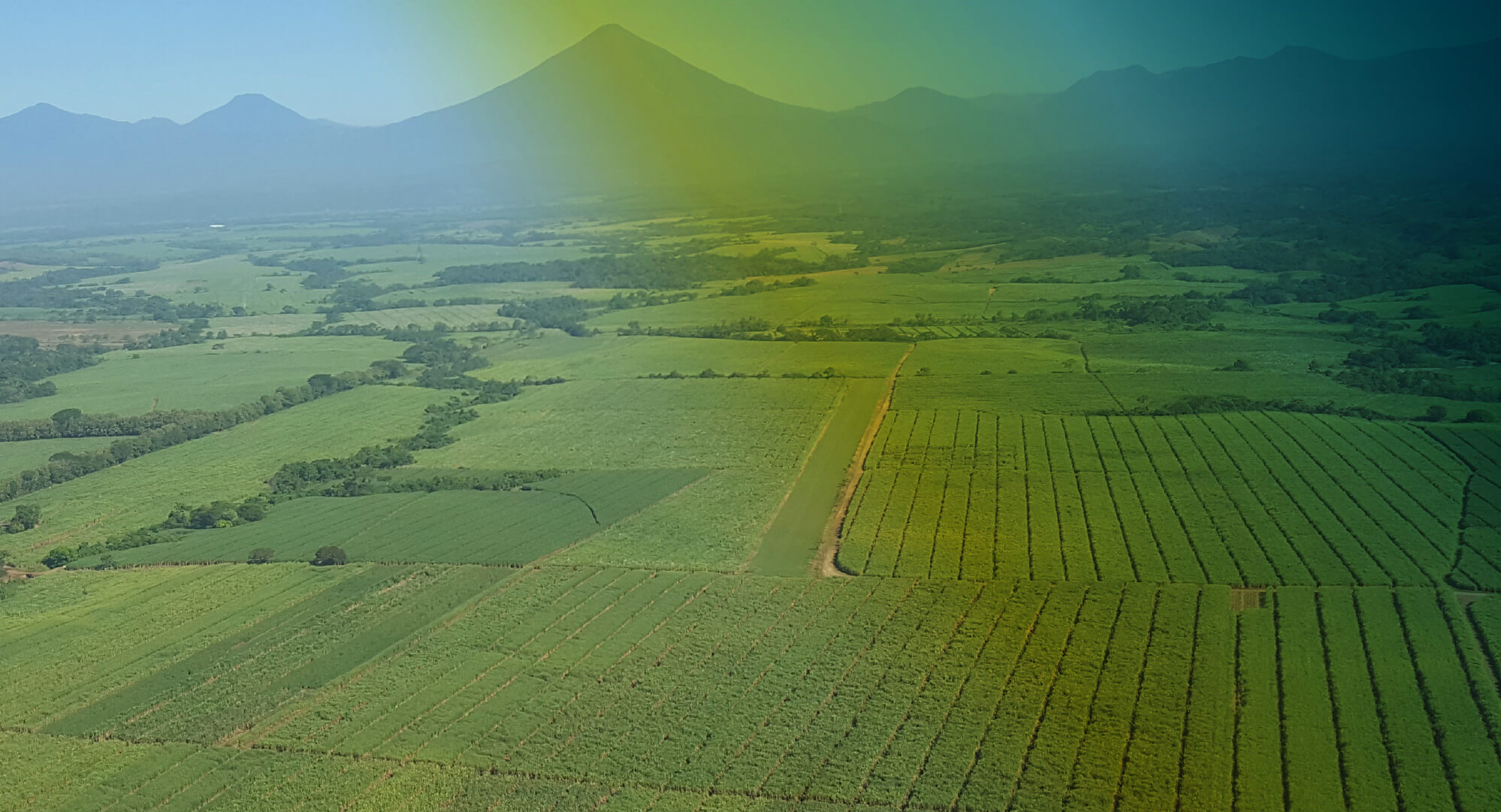Our Environment
The Guatemalan Sugarcane Agroindustry is fully committed to both food security and climate change mitigation through collaboration with various stakeholders to protect land, air and water quality. The industry continues to develop and implement methods for the sustainable use of natural resources, such as the production of cogeneration of clean energy and the restoration of forest cover, that will protect and promote ongoing sustainable and responsible cultivation and production for the future.
The Guatemalan Sugarcane Agroindustry is committed to responsible and sustainable sugarcane cultivation and processing, and has created independent organizations to develop more climate resilient agriculture.

Cengicaña, the industry’s scientific arm, has implemented precision agriculture to reduce water and fertilizer use, as well as demand for new land; and promoted the gradual adoption of green cane harvesting to reduce impact of smoke and ash in the air, as well as preserving biodiversity.
The Guatemalan Center for Research and Training of the Sugar Cane; created by the Guatemalan Sugar Association in 1992, has been in charge of the development and adaptation of new technologies that benefit the agro-industrial sector and has improved varieties of sugarcane, focused in precisión agricultura, as well as the improvement of processes in the factories.

The Private Institute for Climate Change Research -ICC- was created in the face of the challenges of climate change in the Central American region. In 2010, Guatemalan sugar producers promoted its creation with the purpose of contributing to Guatemala and the region in scientific research to reduce vulnerability with strategies for mitigation and adaptation to climate change.
Currently the ICC, is an independent research center that works in partnership with public and private, local, national and international institutions. The results of this joint work have generated positive impacts for the populations and ecosystems in Guatemala. It is the technical advisory body of sugar producers in environmental matters.
The carbon footprint of sugarcane in Guatemala is 0.34kgCO₂eq/kg sugar. Compared to the sugar cane produced in the United States, Thailand, and Mexico, sugar’s carbon footprint from Guatemala is much less.
Cengicaña´s research has enabled productivity indicators to be raised, both in the field and in the factory; as well as the use of waste, such as molasses for the production of alcohol, cane bagasse to generate renewable energy, water recirculation in factories, among others.
Waste management
The Guatemalan Sugarcane Agroindustry’s efforts to ensure sustainable and responsible sugar production has led to reductions in waste, by transforming cane byproducts or waste into environmentally friendly materials and energy cogeneration.
Some Guatemalan sugar mills reuse sugarcane byproducts (bagasse, vinaza, melaza) to generate power, fertilizers, and other products beneficial to the environment. The Guatemalan Sugarcane Agroindustry produces every year 7.5 million tons of sugarcane bagasse used for cogeneration of renewable energy. Additionally are systems of water reuse.
Water is essential for living, and so it is for agricultural and industrial processes. Due to climate change impact, and natural phenomena (such as El Niño), the sugar industry has come to implement better management practices to reduce water consumption and make a rational use of the resource.
The Sugarcane Agroindustry participates Technical Tables with community, local authorities, institutions and governmental and human rights organizations, as well as other companies, to coordinate in the rational use of water from the rivers, with the objective that everyone can enjoy the water resource.
Guatemalan sugar producers operate within the framework of an environmental management policy of union compliance that has allowed the standardization of practices in the management and use of water, air quality, use and application of agrochemicals, solid waste management and conservation of biodiversity.

Water use in agricultural processes has been reduced by implementing more efficient irrigation systems, application of new technologies and processes (such as dry cleaning of sugarcane).

In the industrial process, used water is sent to cooling systems (towers or sinks) to be reused later in the process. Industrial wastewater from the sugar production is too reutilized after being treated for fertigation (allows a timely supply of water and fertilizer application).
The Guatemalan Sugarcane Agroindustry has established itself as a global leader in energy cogeneration by ensuring access to sustainable and reliable energy for the country. The industry achieves this by running its mills with renewable energy produced from a sugar byproduct during the harvest season and exporting the excess energy produced.

From sugarcane bagasse, a waste of sugar production, renewable energy is produced, supplying up to 30 percent of the country’s electricity demand.

The sugar mills in Guatemala are self-sufficient, producing their own energy and the surplus its sold to the National and Regional Electricity Market, contributing to the diversification of the energy matrix, to overcome the energy deficit that the country faced, and the stability of the electricity tariff.

The generation of renewable energy from biomass, has prevented 4 million tons of CO2 from reaching the environment due to the reduction of use of fossil fuels to generate energy.

Due to its efficiency, the Sugarcane Agroindustry of Guatemala is a world reference in the cogeneration of energy from biomass, it was one of the first countries to produce more than 5 percent of the national generation. 992.4 Megawatts is the installed capacity of the mills to generate energy

Two of the mills currently have ethanol fuel certifications from the International Sustainability and Carbon Certification (ISCC) system.[1] ISCC is the most commonly used certification scheme in the European Union. These two mills primarily export ethanol to the EU, and this certification facilitates the mills to meet the EU’s sustainability requirements.

Alcohol, produced from molasses that is a waste of sugar production, is another source of energy. Each year 65 million gallons are produced, which are exported to be used as fuel, in beverages and drugs in the countries of destination.
To face the challenges that climate change triggers, the sugar industry has developed new sugarcane varieties that are more resistant to plant diseases and water stress, so the plan adapts better to the climate conditions of the region were the crop takes place.
With the support of ICC, the Sugarcane Agroindustry has planted more than 8.8 million trees to date in the areas that are important for sugarcane cultivation, such as the high part of watersheds and water regulation zones. This allows a greater abundance of water in the river flow, becoming a biological corridor and contributing to the recovery and conservation of flora and fauna.
The program, in addition to recovering wetlands, water sources and riverbanks, has a factor of involvement and community support, since all the trees come from a hundred local nurseries managed by the communities.











